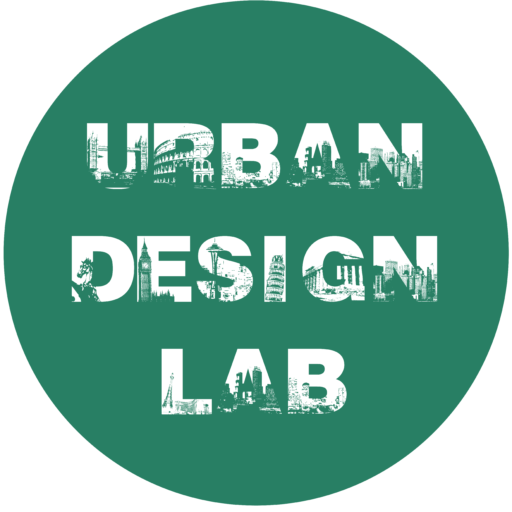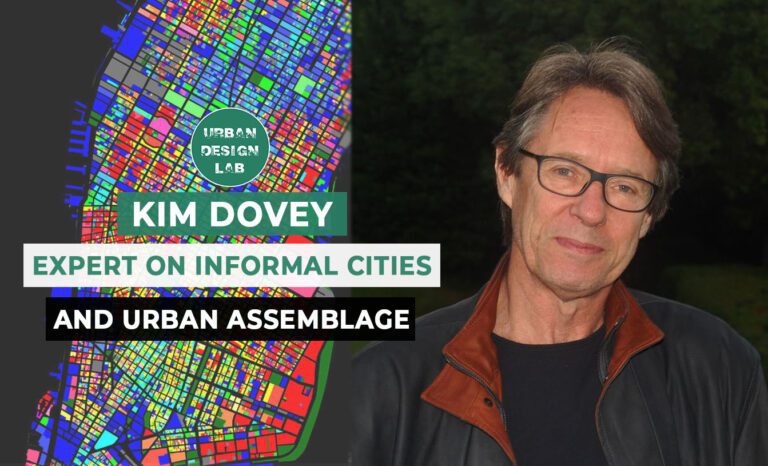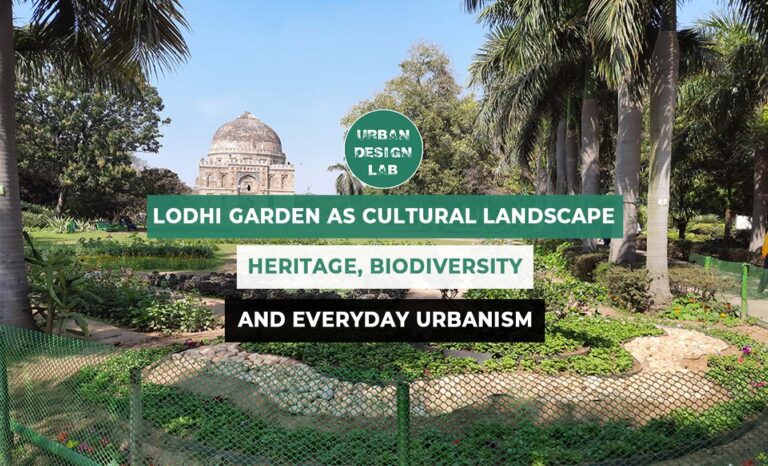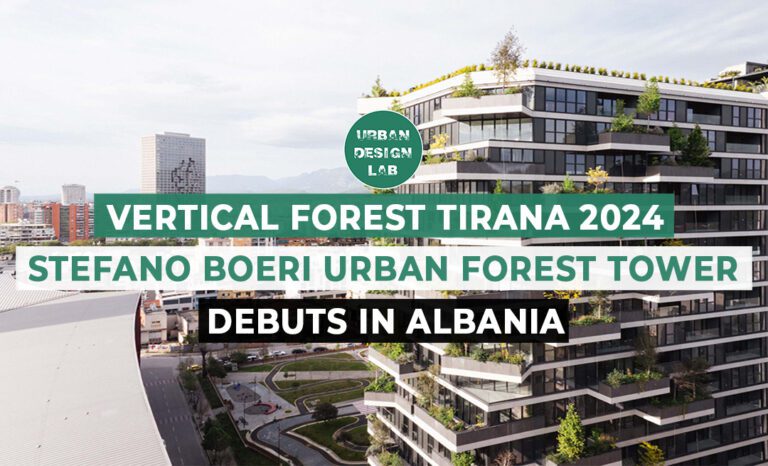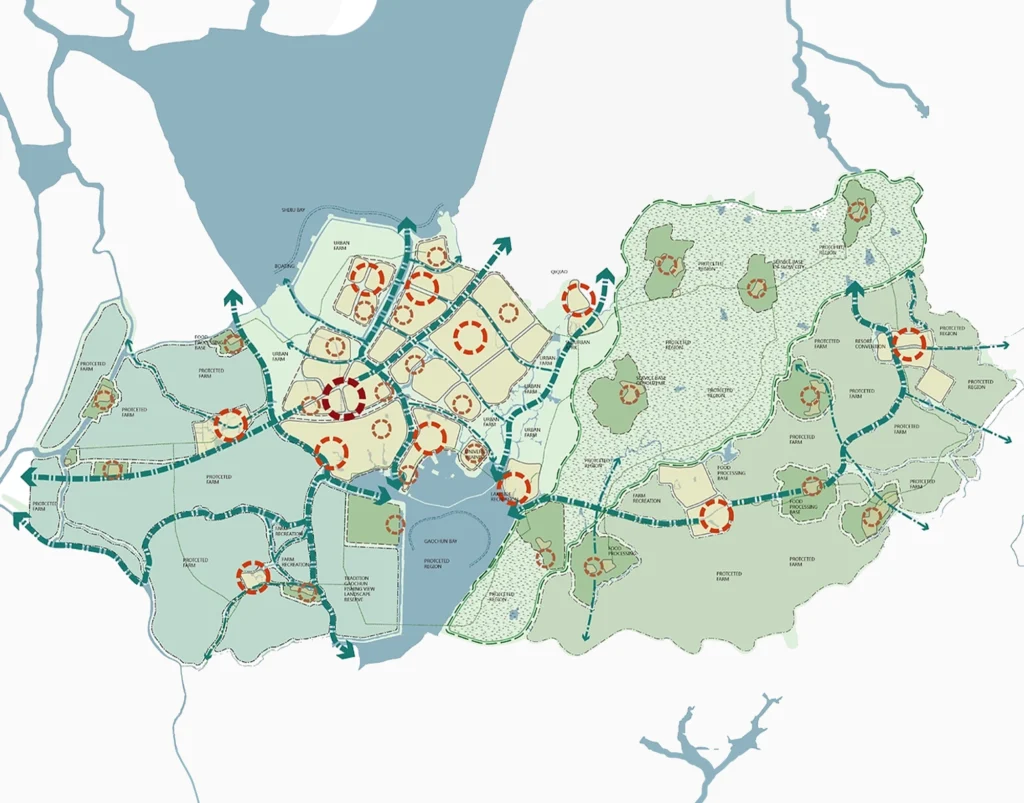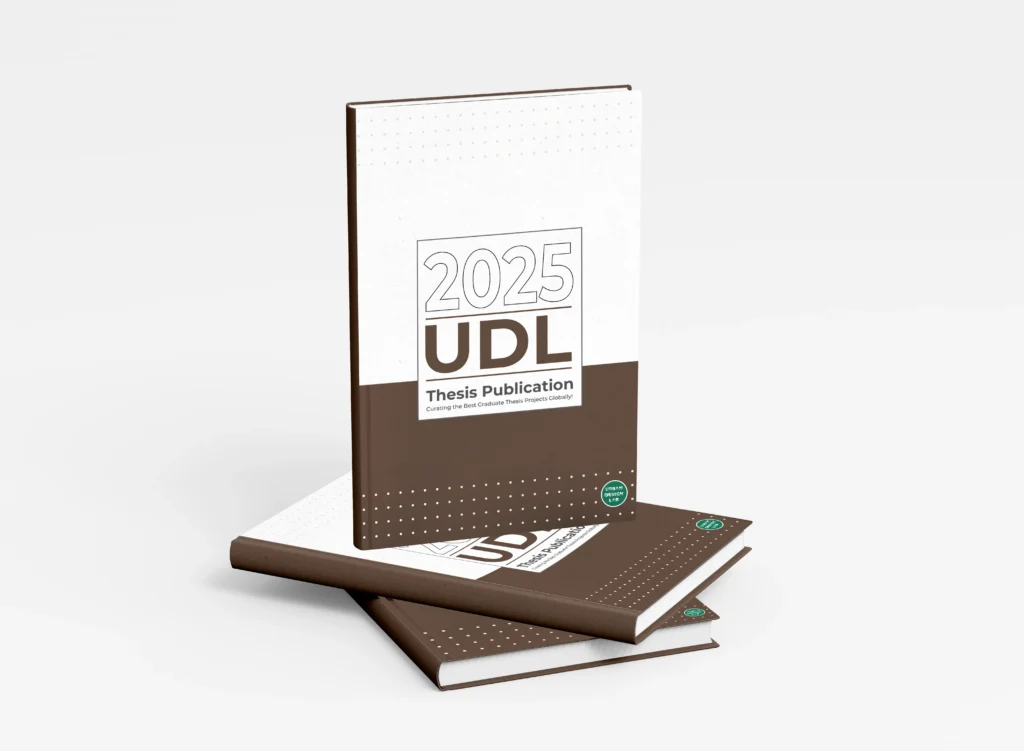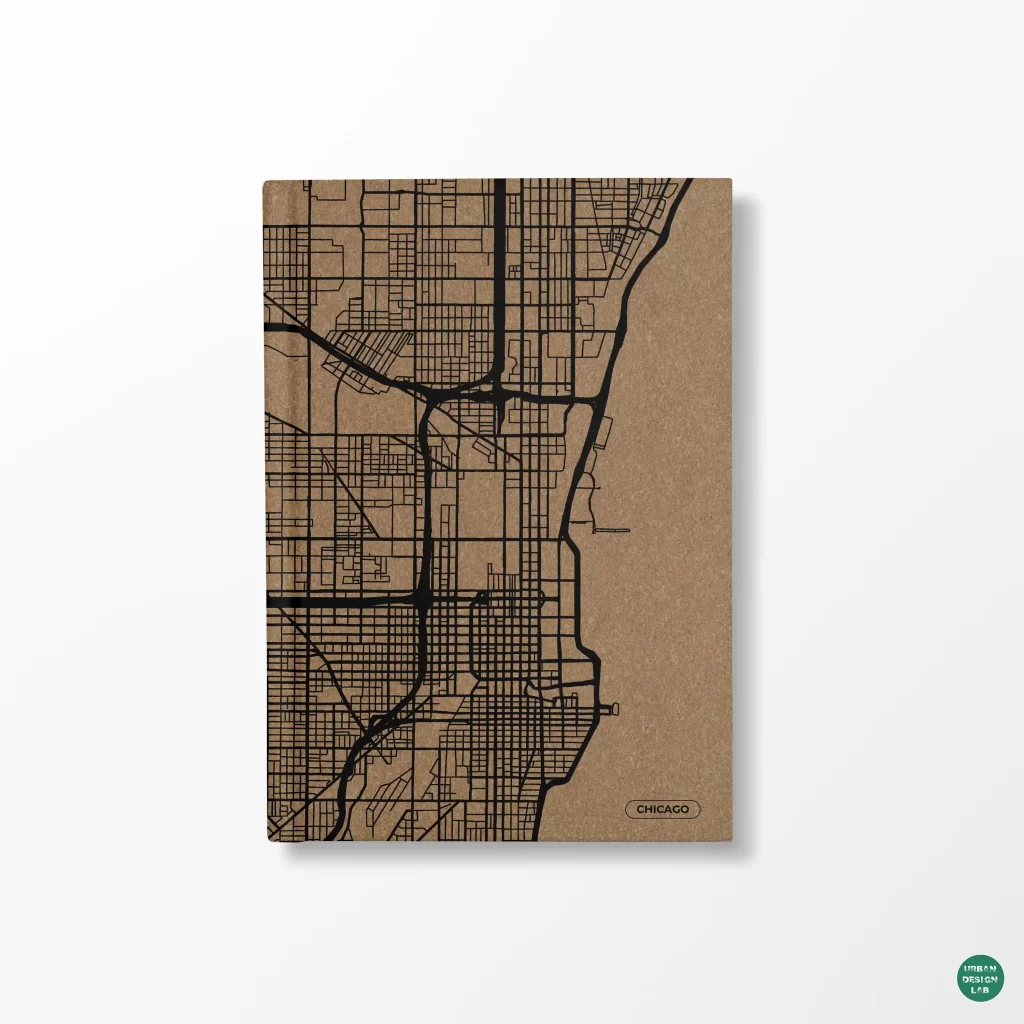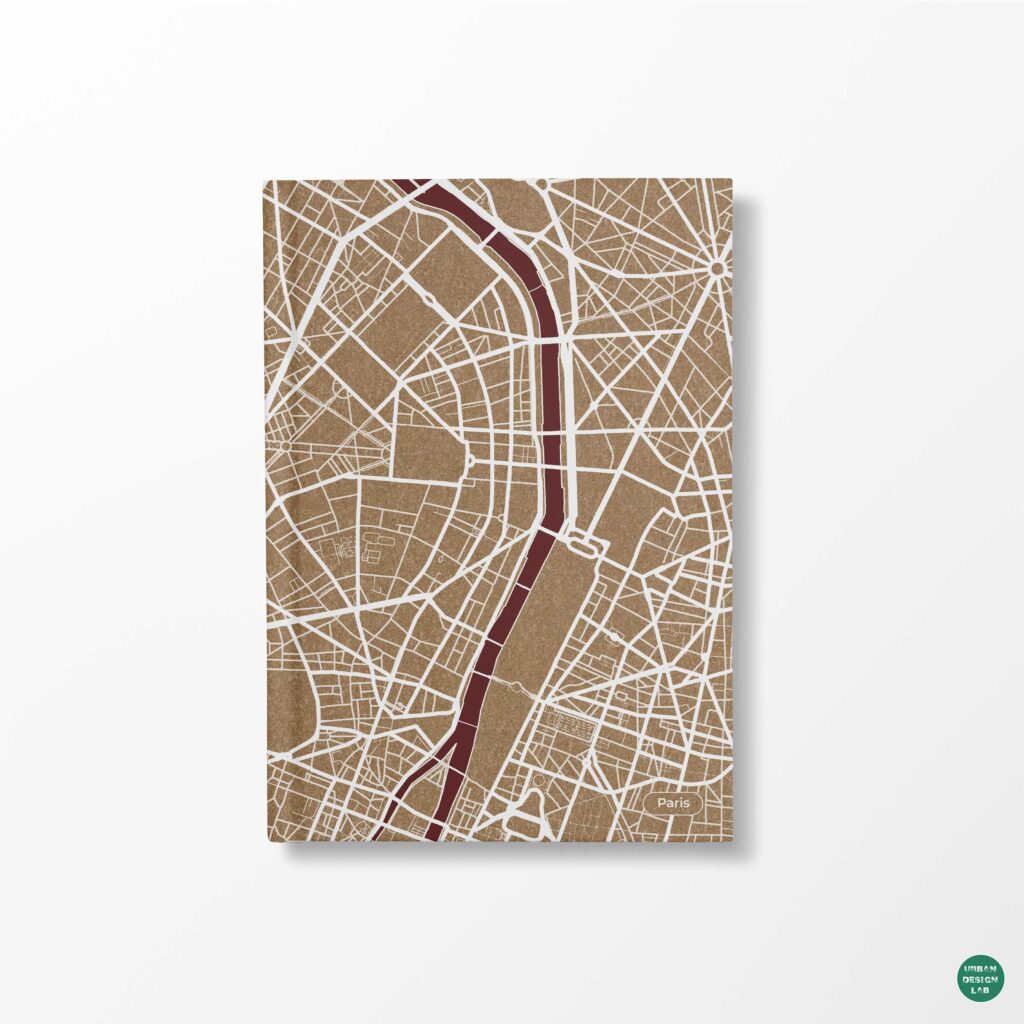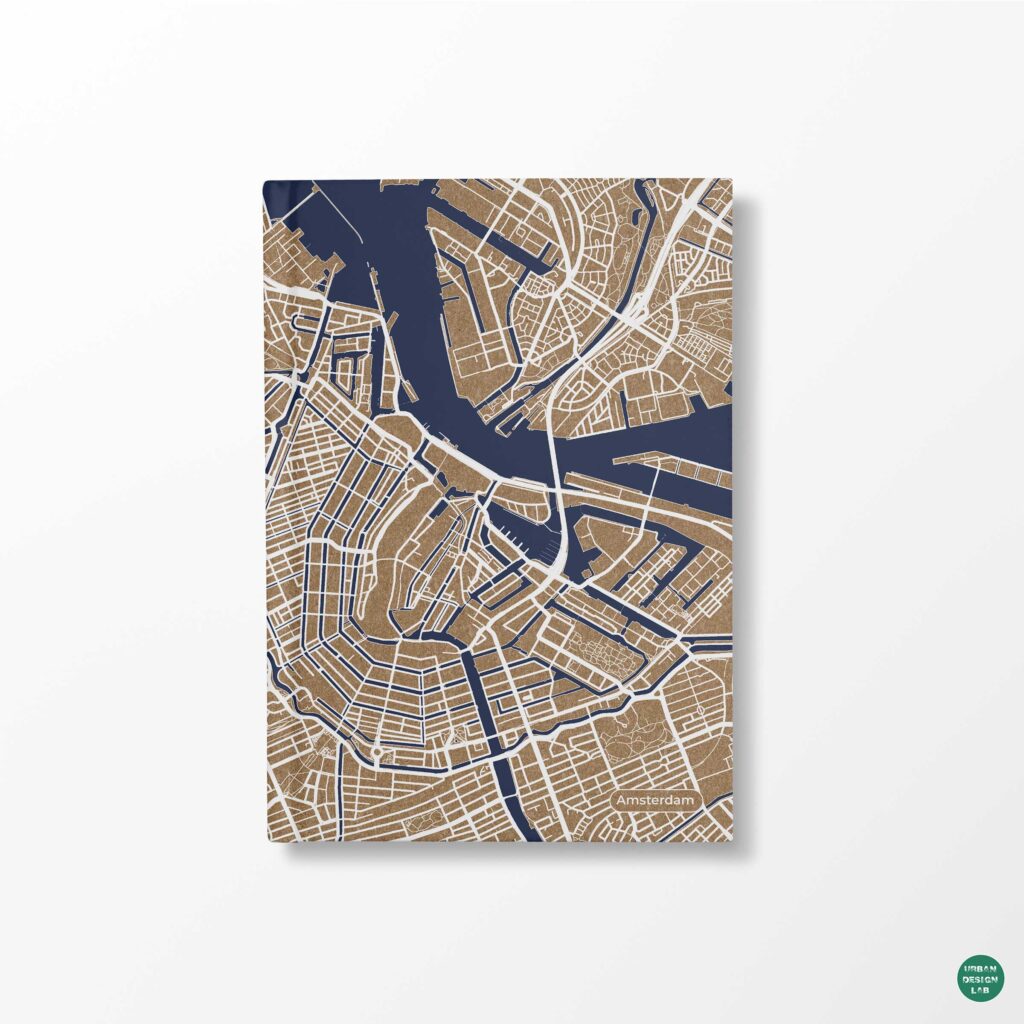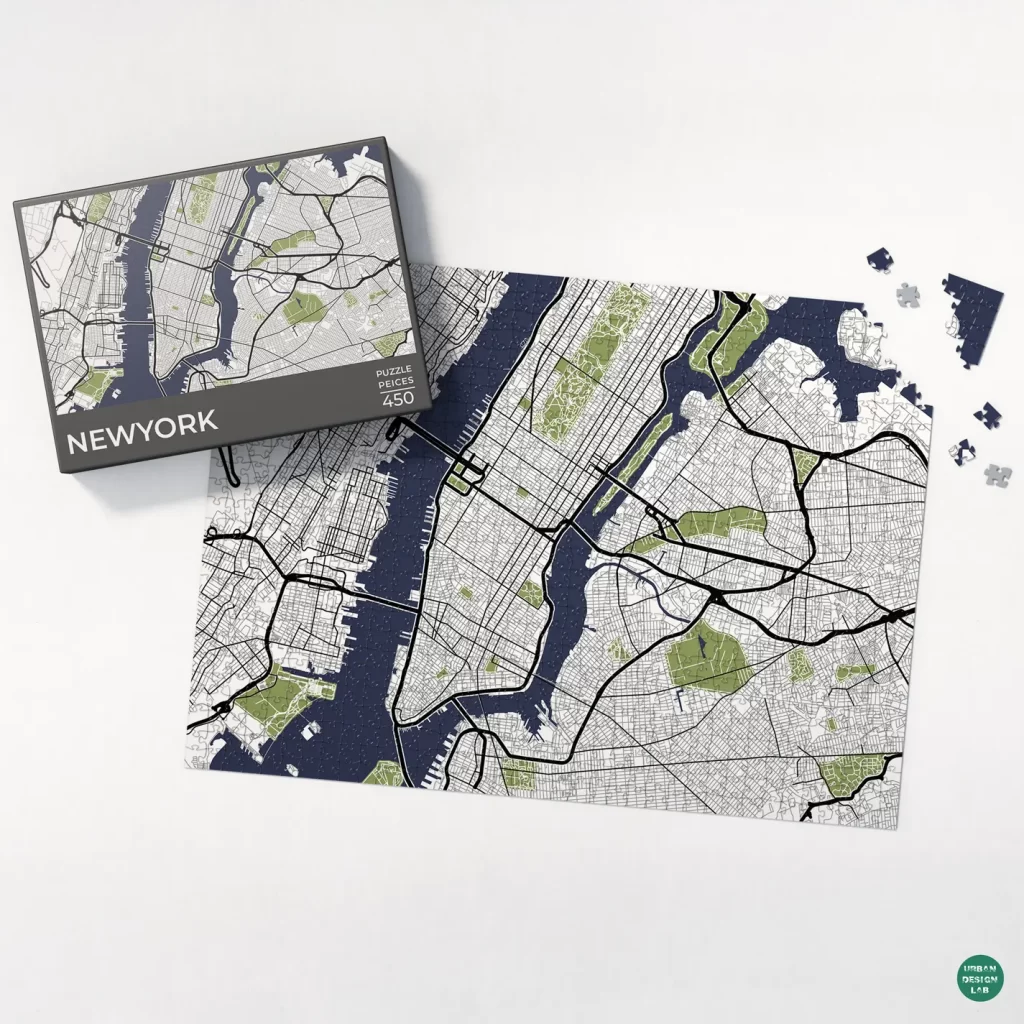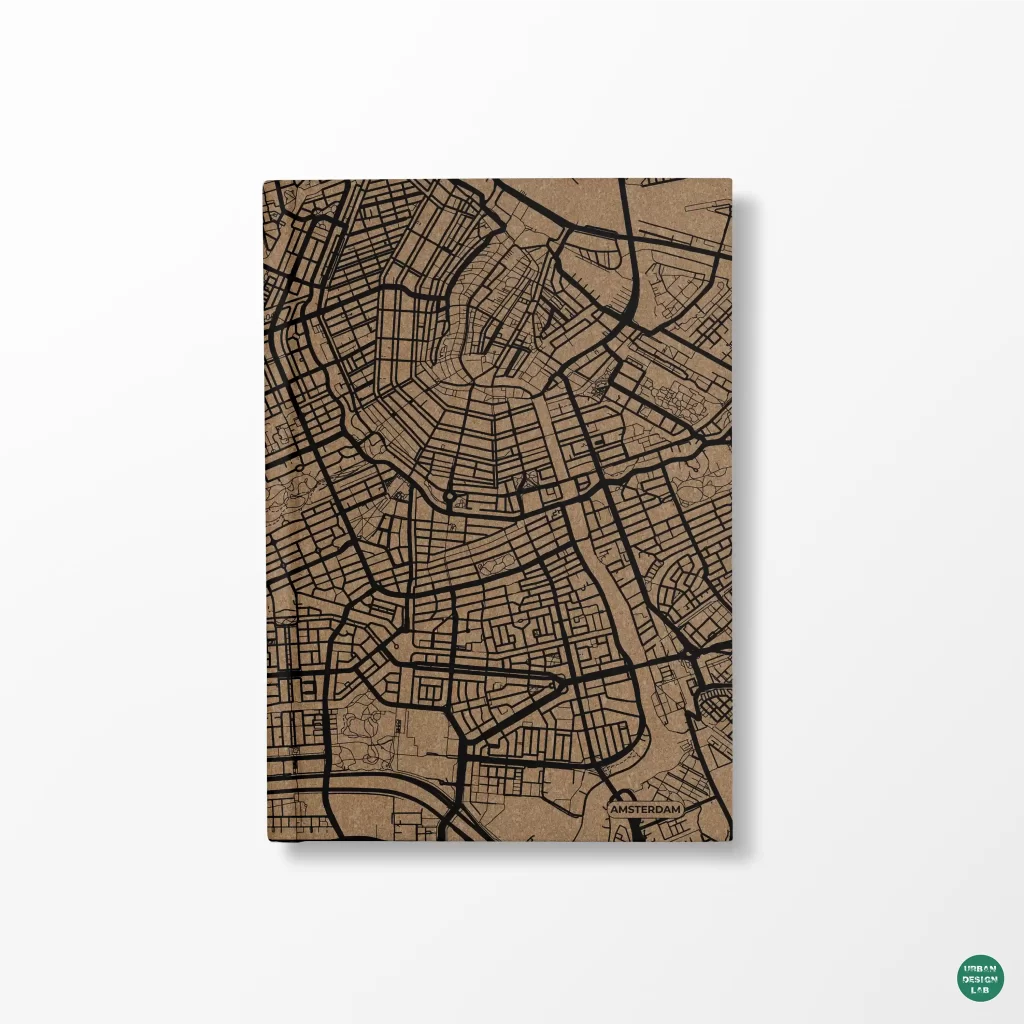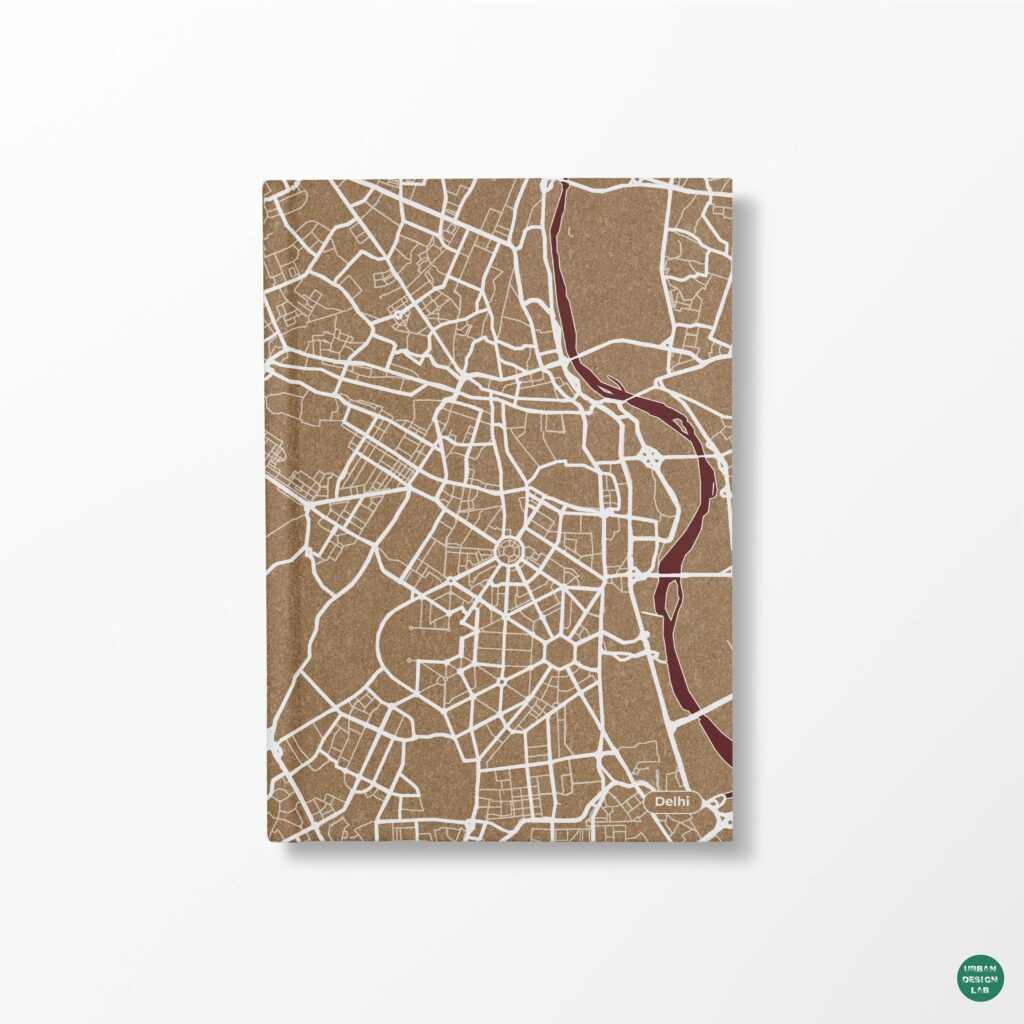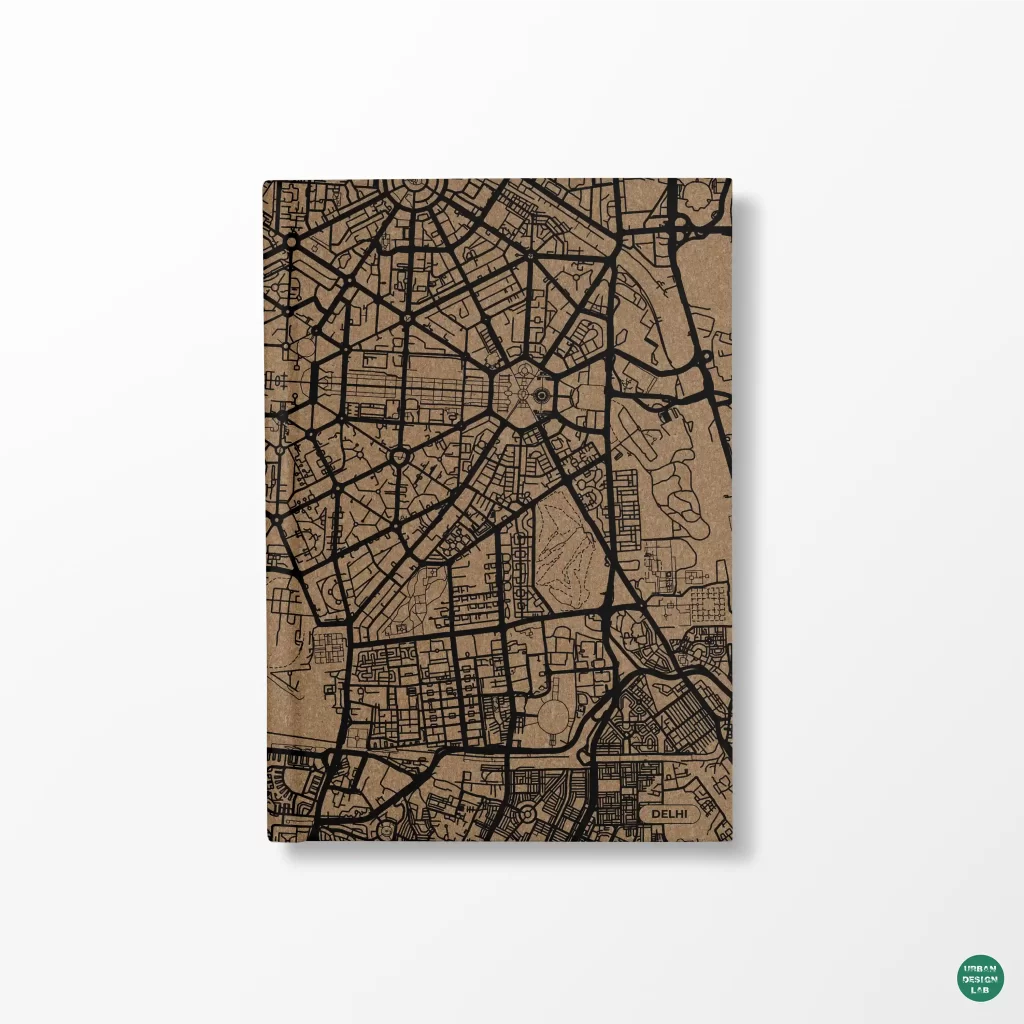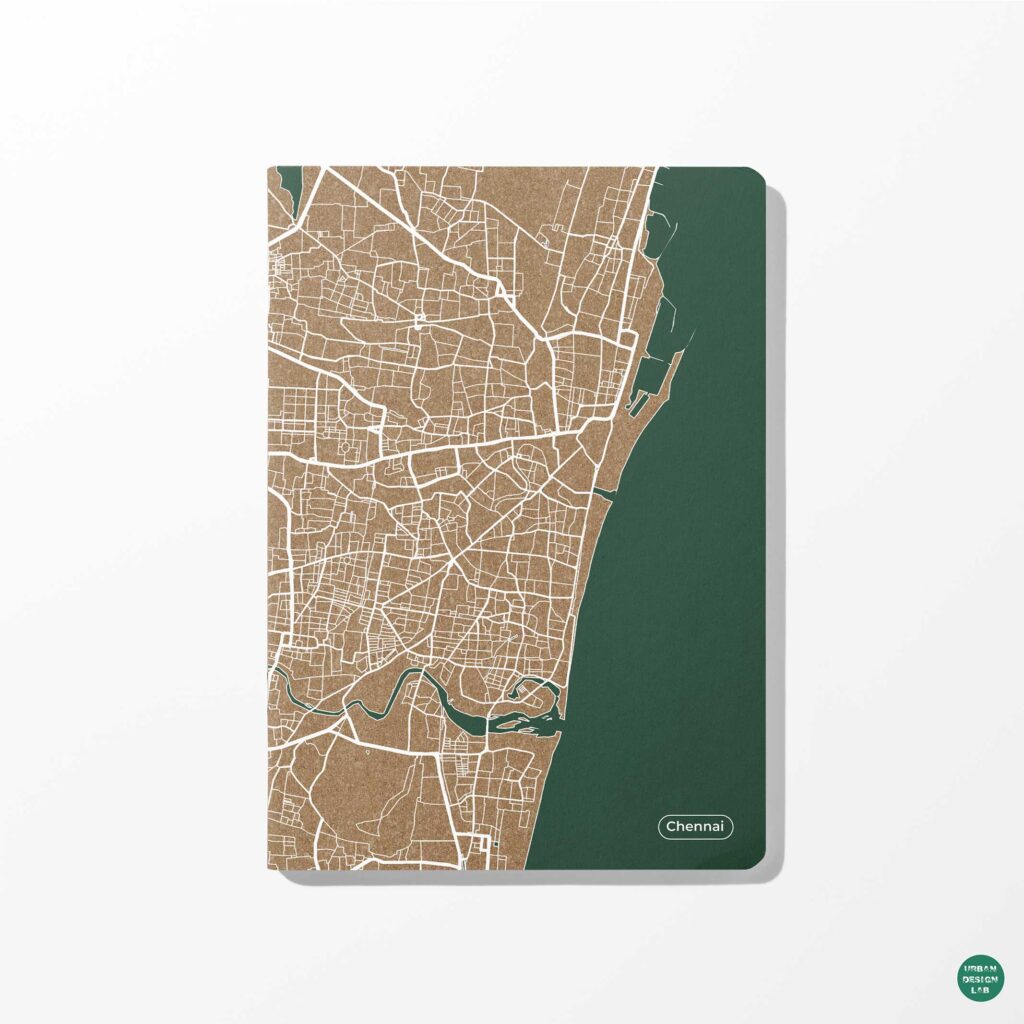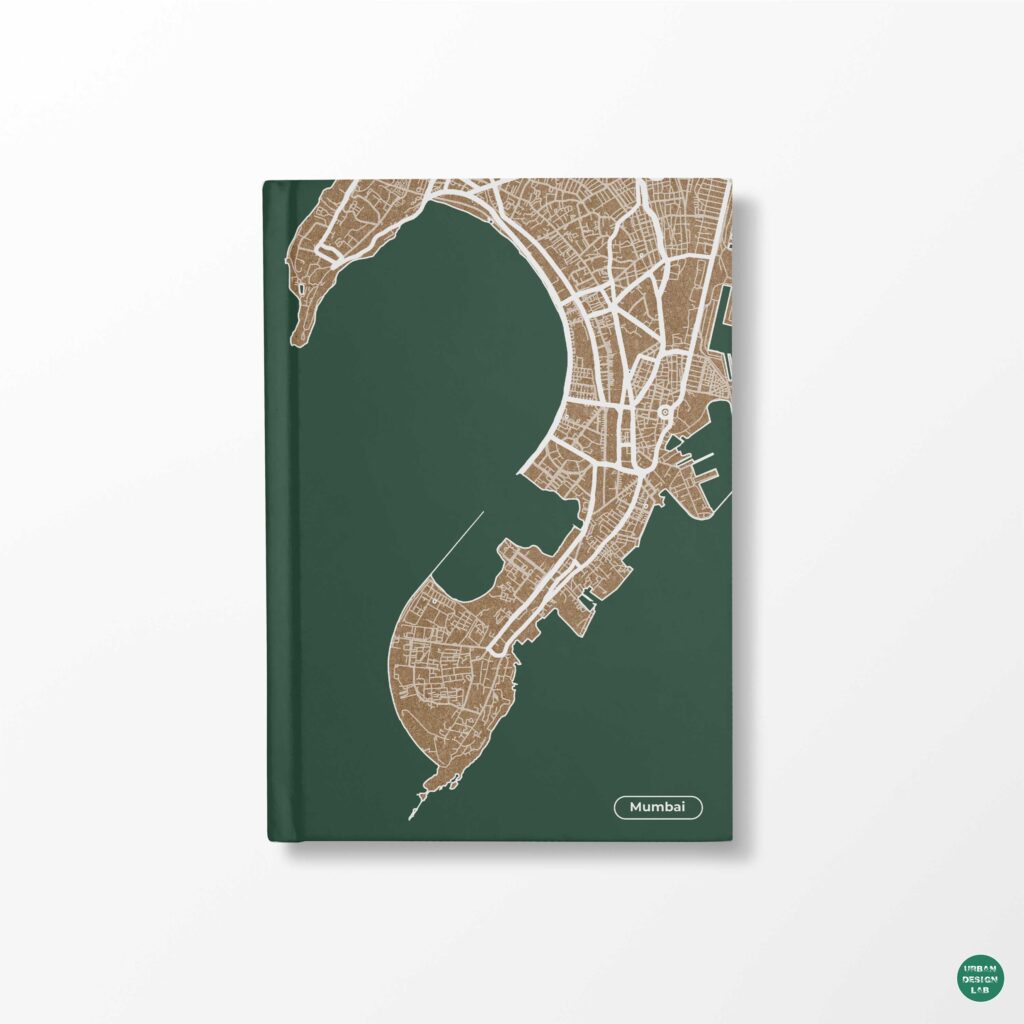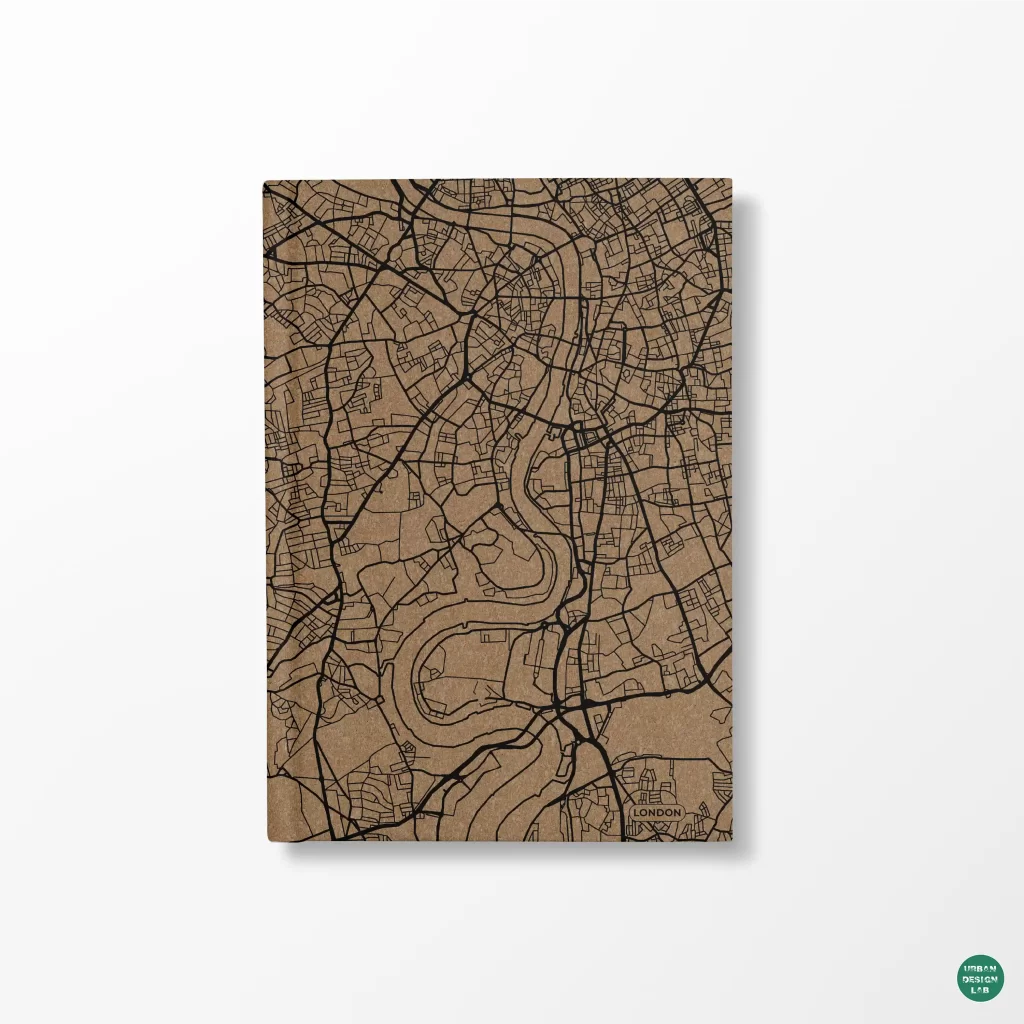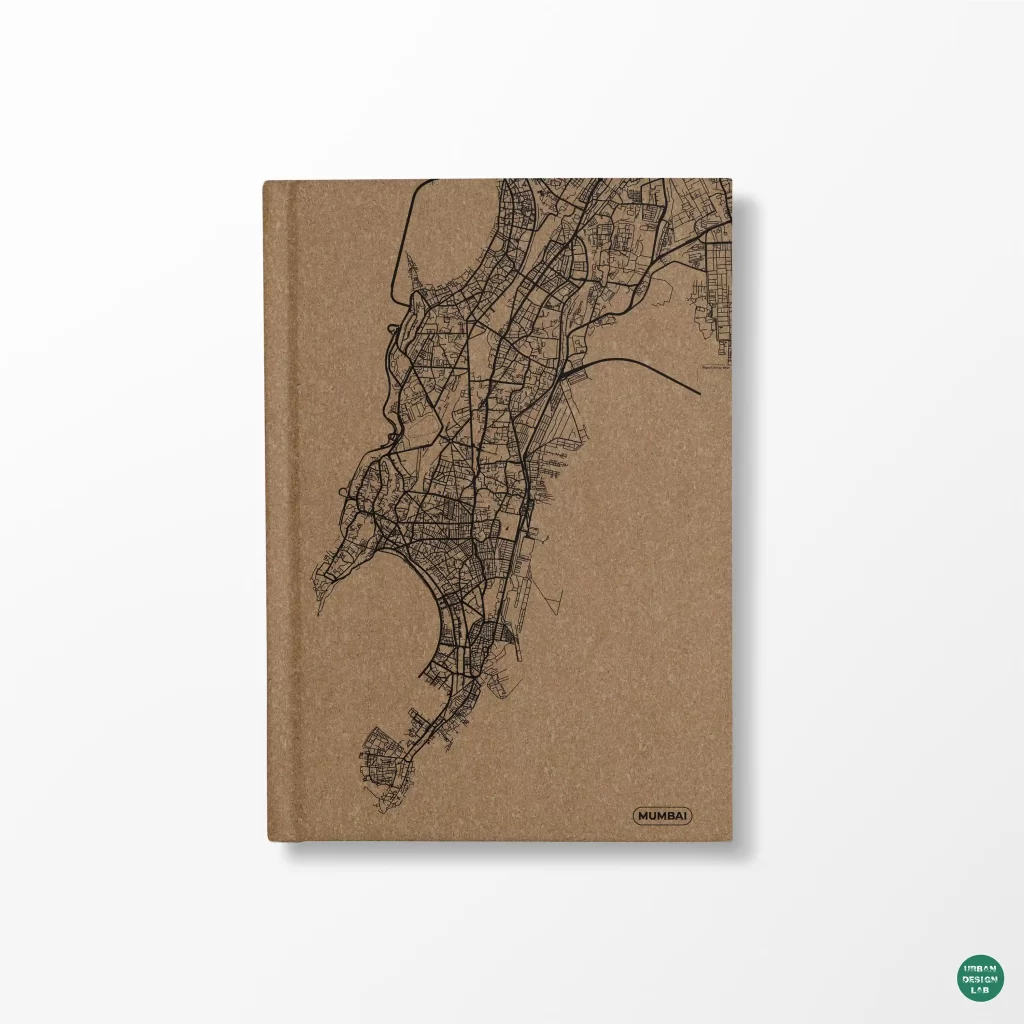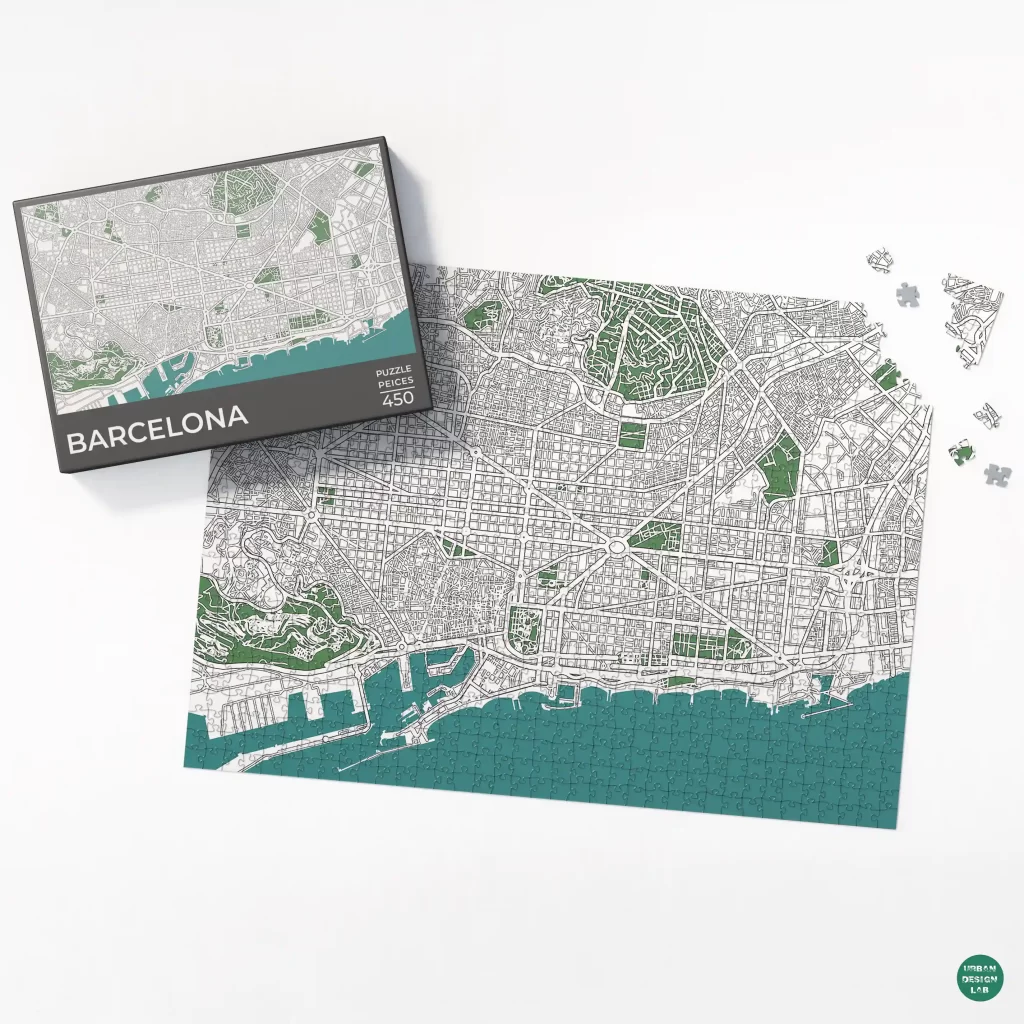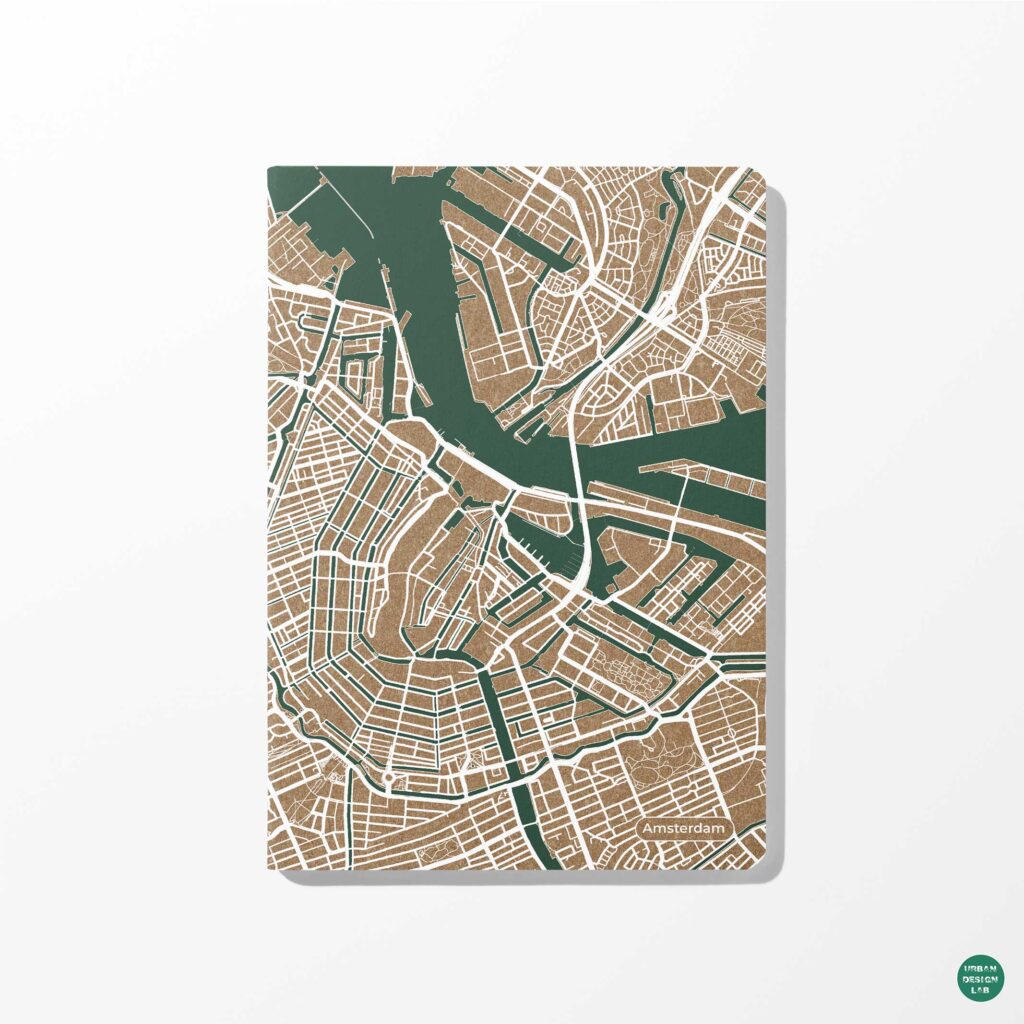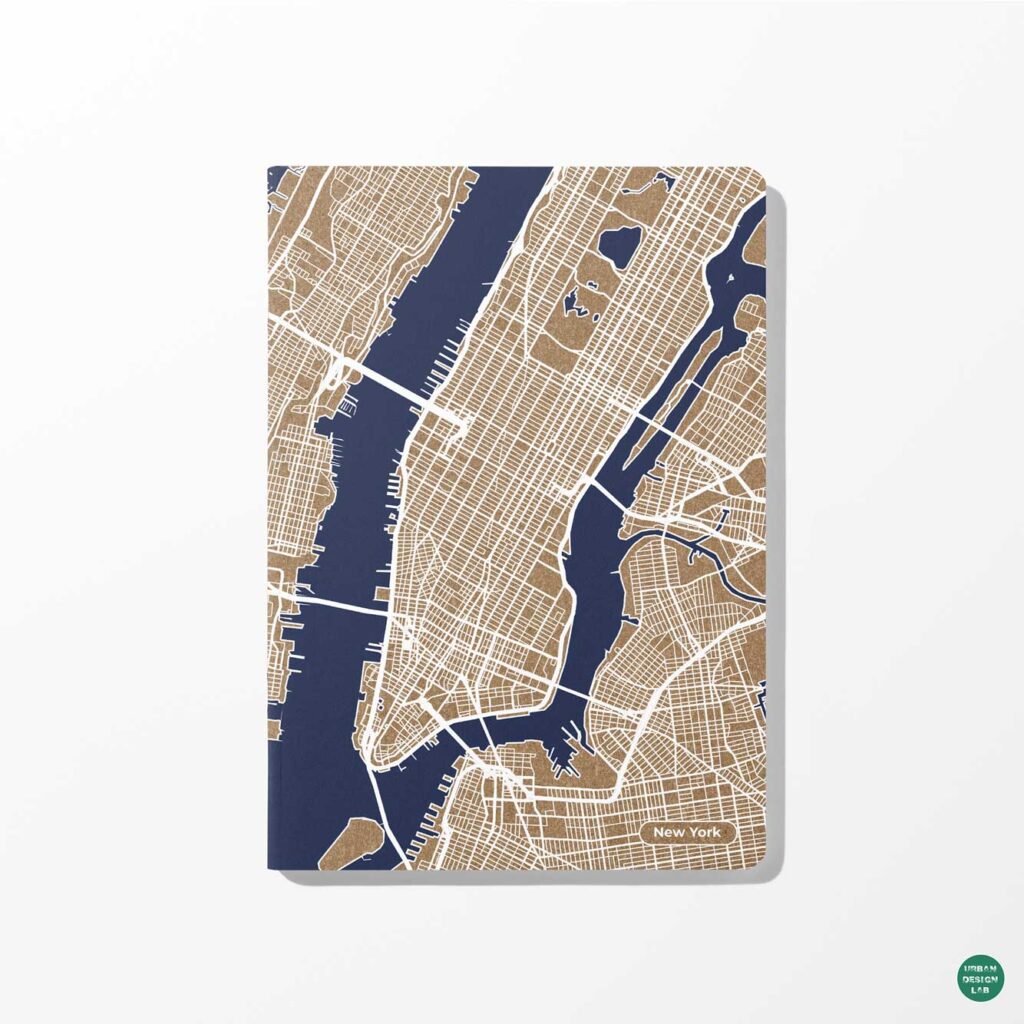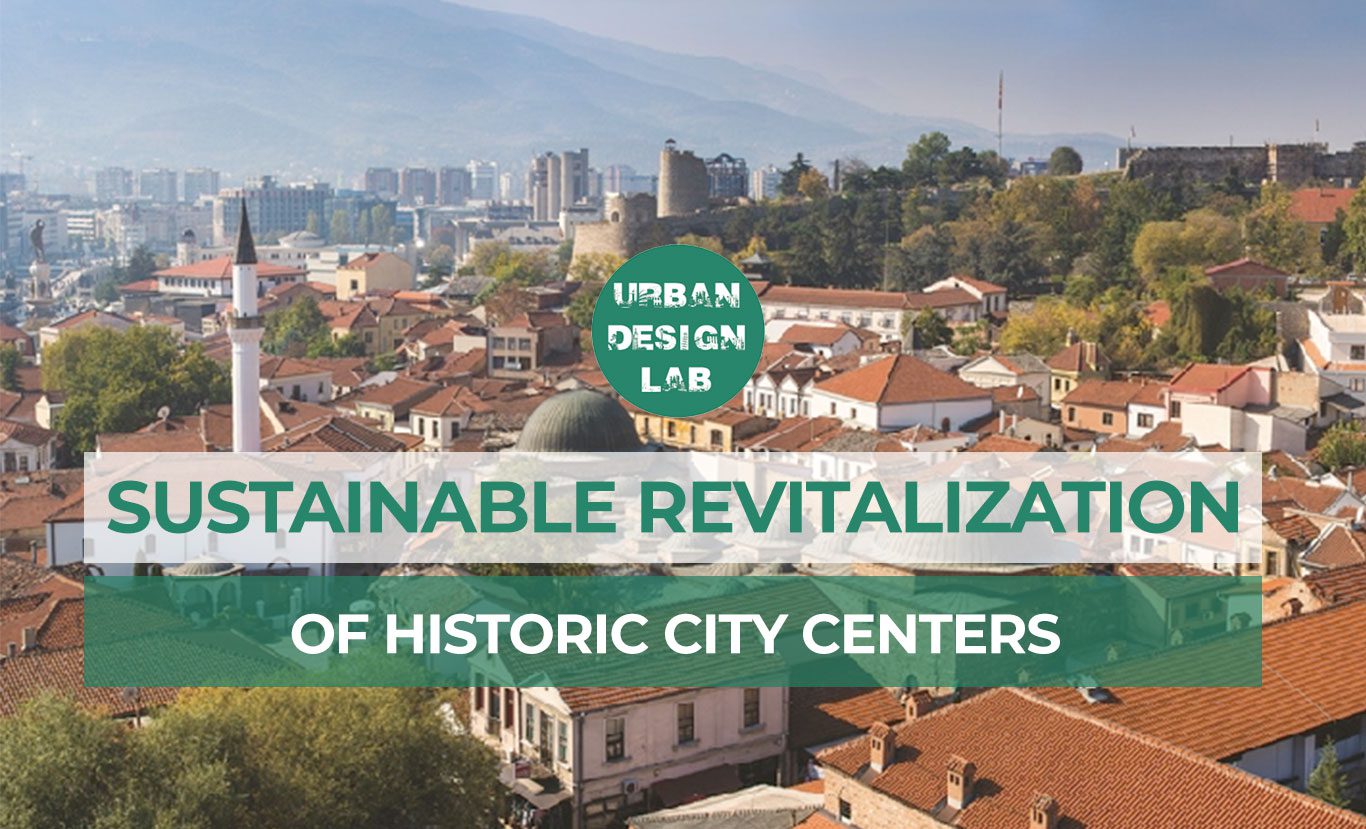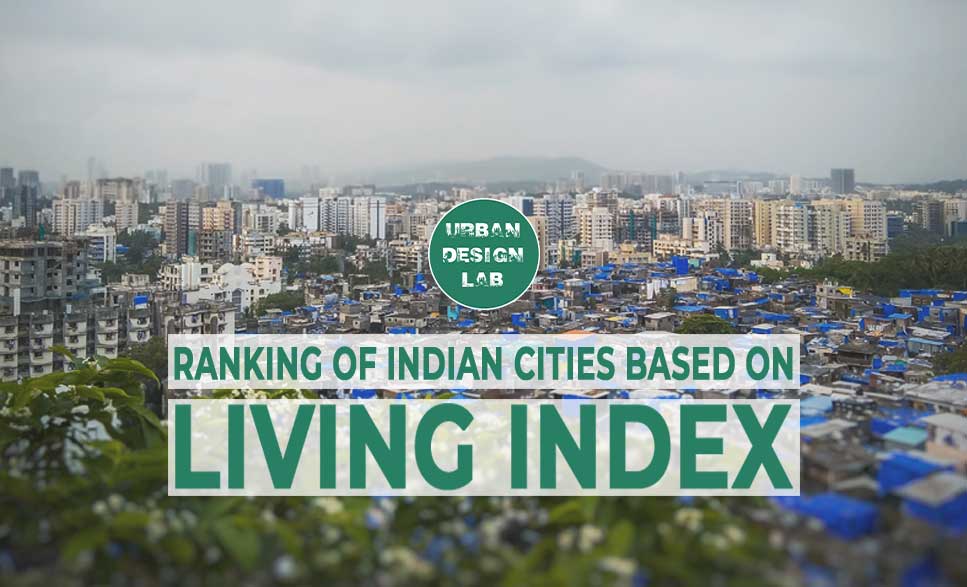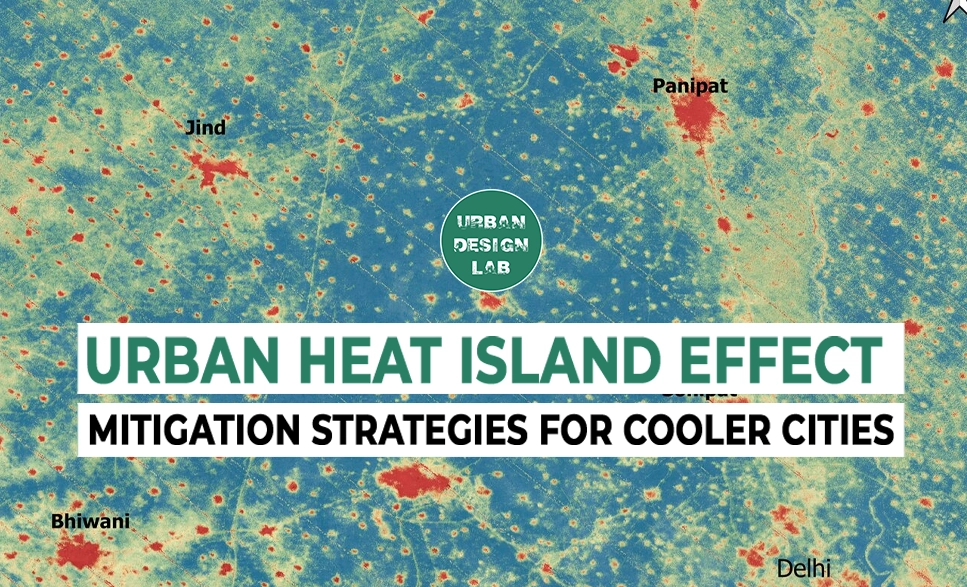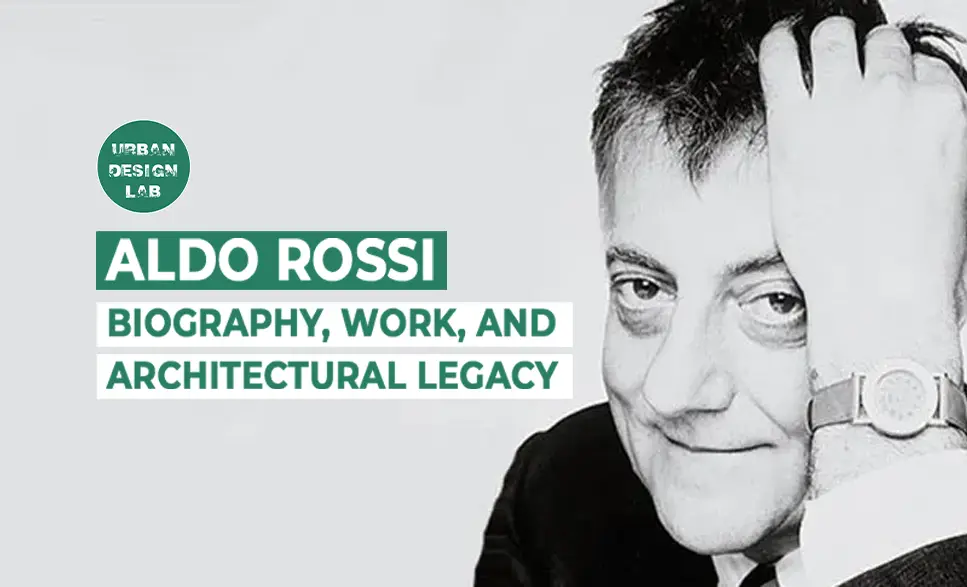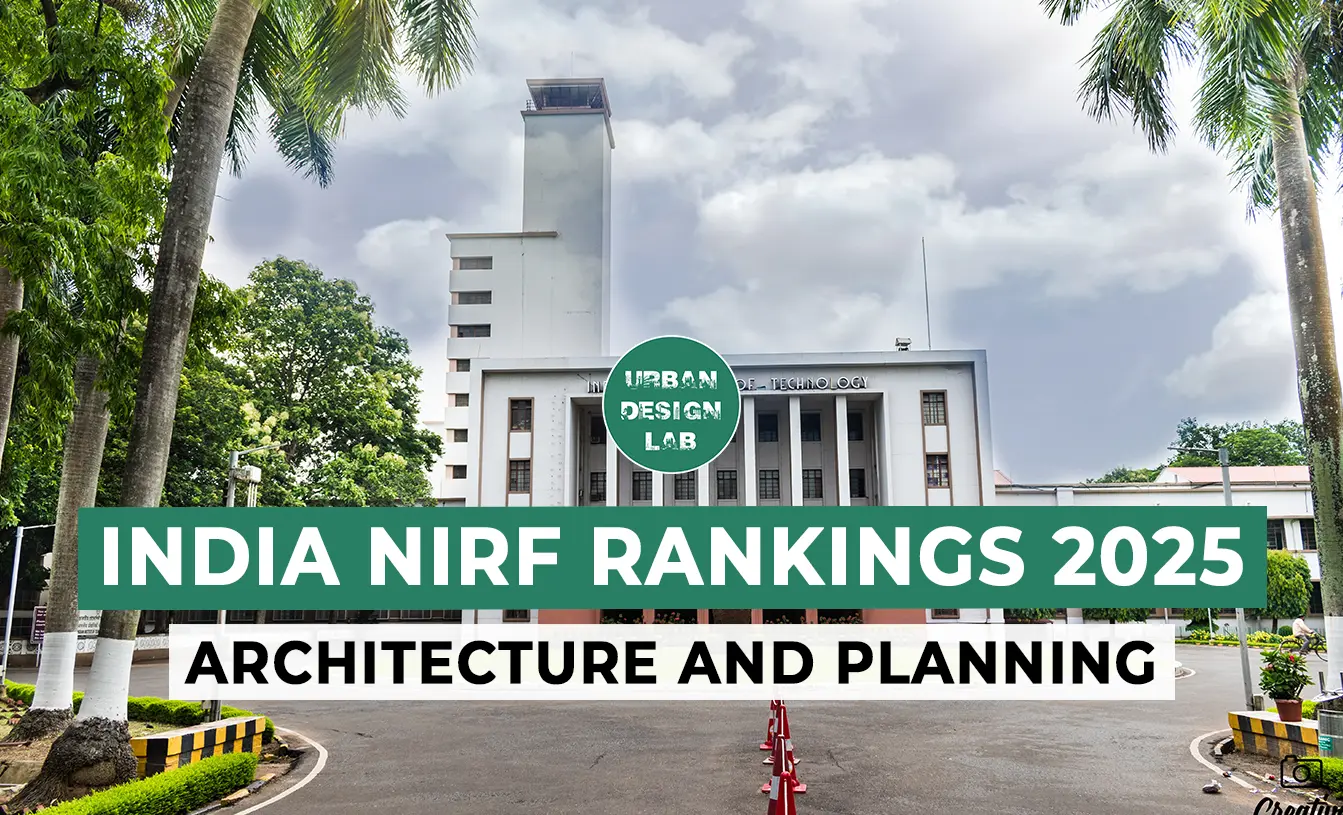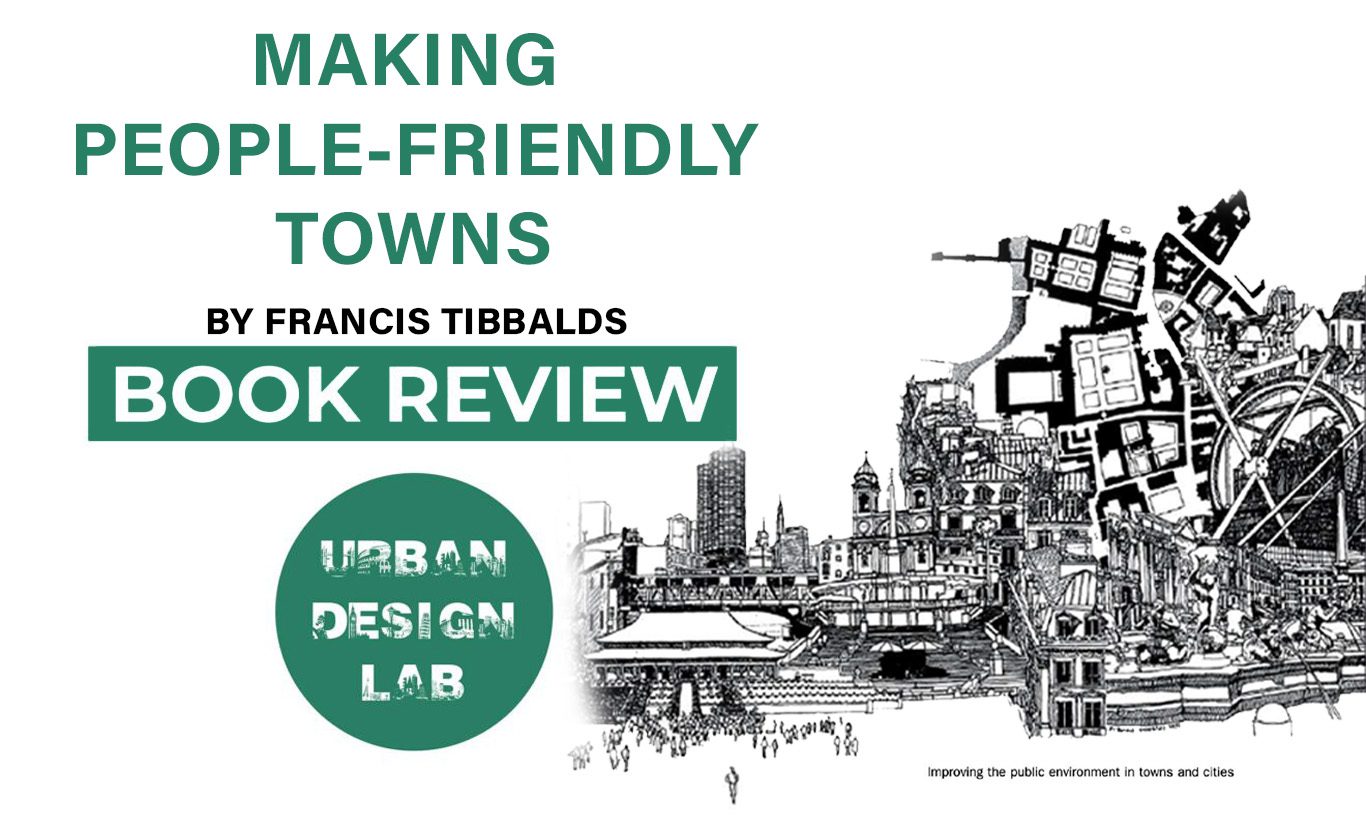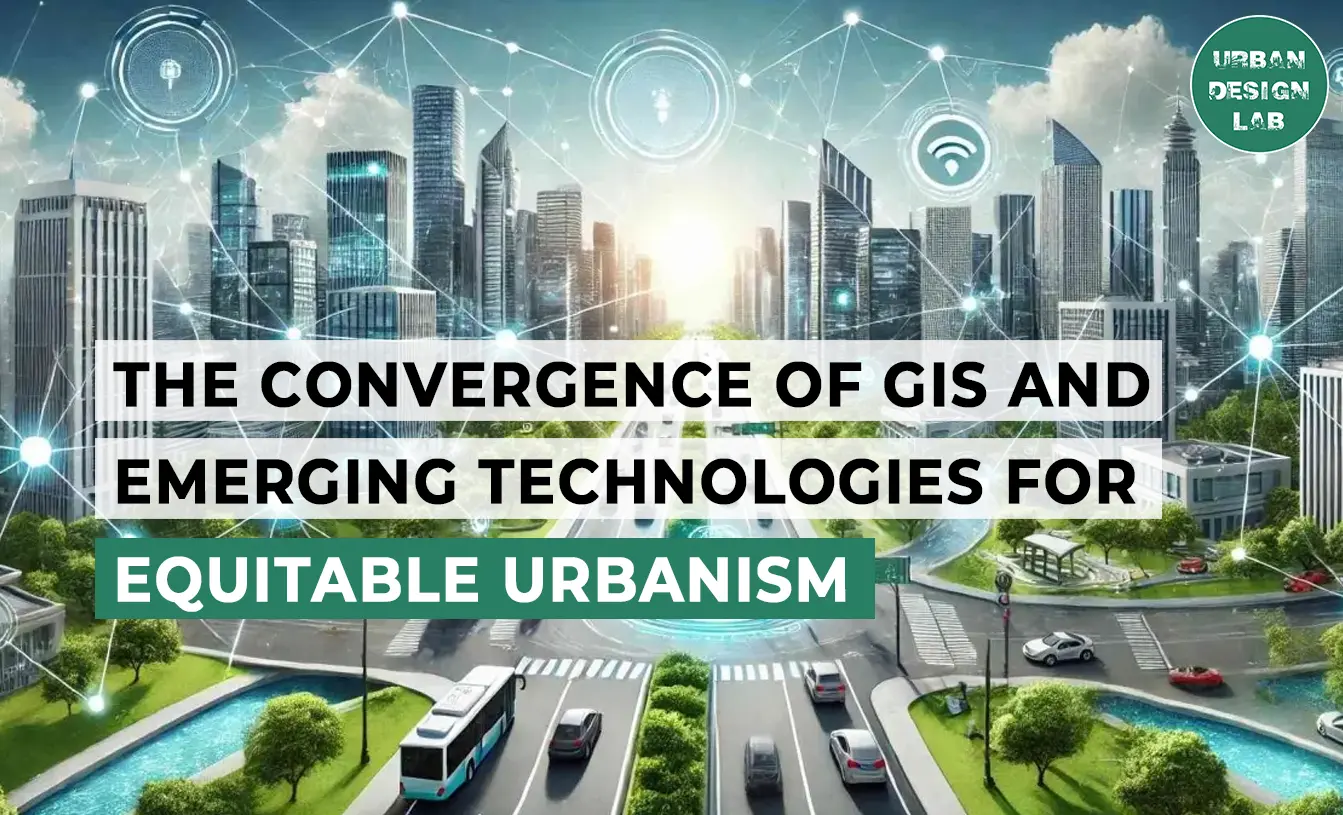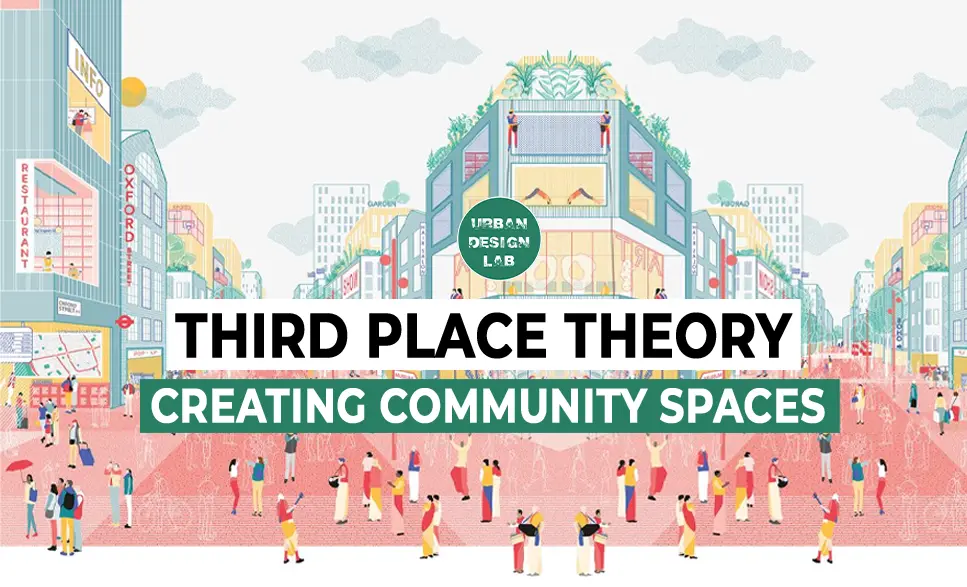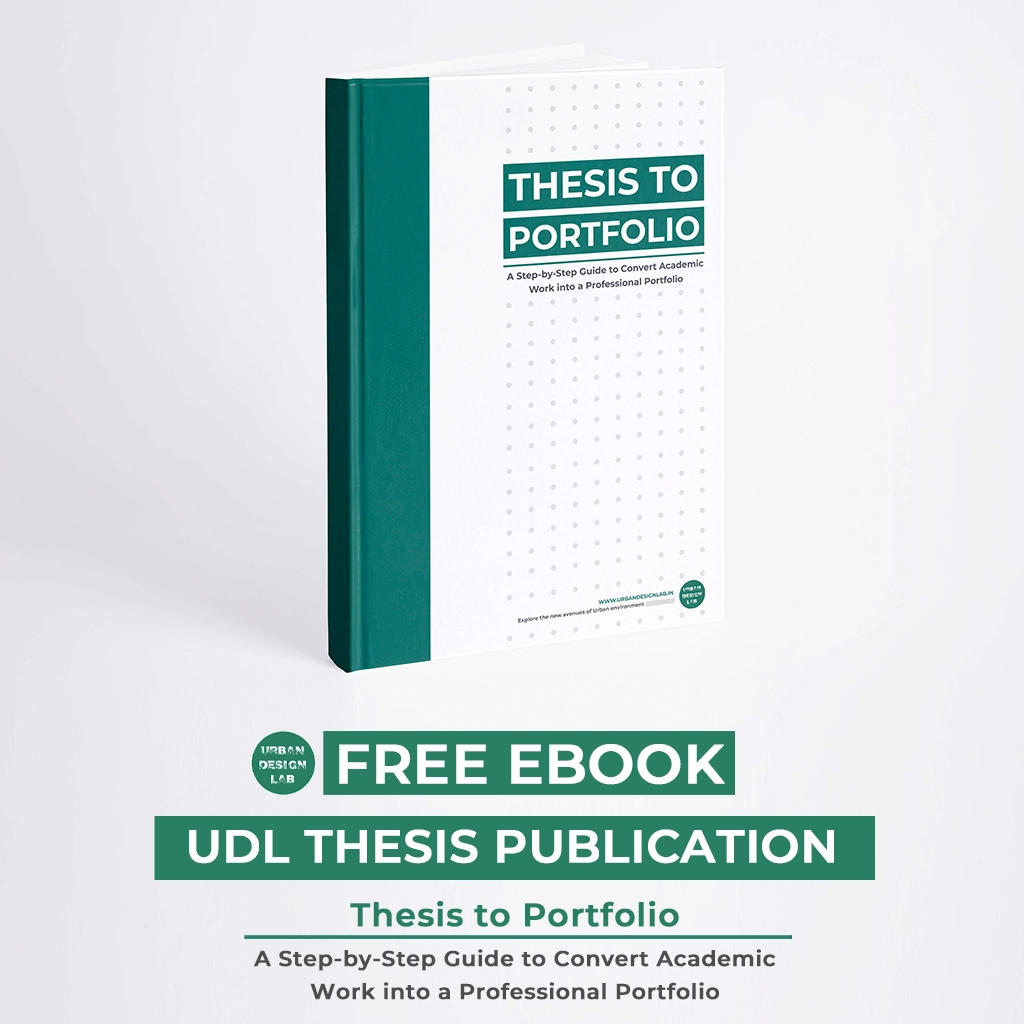
Integrating Ecological Theory with Regional Climate Planning for Resilient Cities
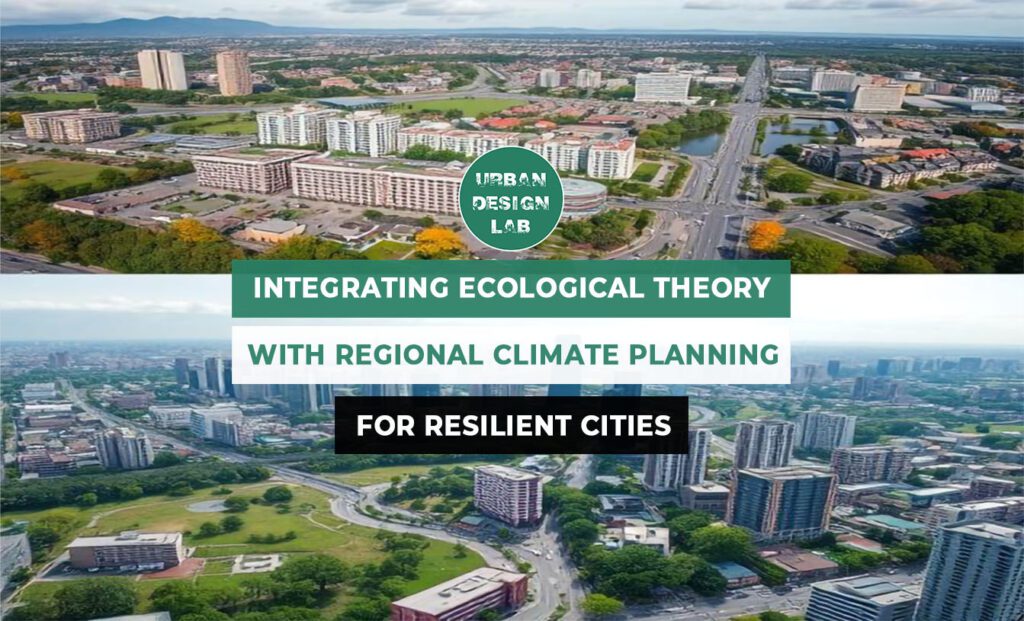
Existing regional climate planning is often based on broken, jurisdictional methods and hard “grey” infrastructure, which can be vulnerable to new, non-linear climate risks. This article argues that the time is right for a shift in thinking, promoting an ecologically-informed planning paradigm. Envisioning metropolitan regions not just as agglomerations of cities but as complex, interdependent Social-Ecological Systems (SES), we can leverage robust ideas such as resilience, landscape ecology and many others to build genuine adaptive capacity. This article distills those core theories into a single “Ecological Resilience Planning” (ERP) conceptual framework. The framework guides planners through a process of systemic mapping, designing multifunctional green-blue infrastructure networks, and adaptive governance. This method overcomes resistance to climate change, rather, seeking to build regions that can absorb shocks, reorganize, and adapt, ultimately to foster more adaptive, equitable, and resilient urban futures.
Introduction
The 21st century is marked by growing climatic uncertainty. Urban regions, where the majority of the world’s inhabitants live, are disproportionately hit by extreme events—such as South Asian heatwaves and catastrophic coastal floods. Conventional responses include bolstering planning and engineering: more sea walls, larger storm drains, and improved AC systems. This resistance-based response is inadequate.
This “grey infrastructure” strategy too often develops a false sense of security, resulting in apocalyptic failures when climate-driven thresholds are inevitably exceeded. In addition, it functions in inflexible administrative silos, disregarding the reality that climate and ecological processes, like watersheds and airsheds, cross municipal borders. A new strategy must be adopted—one that accepts complexity and uncertainty.
Ecological science underpins this approach, this essay argues. Theories of natural ecosystem persistence and resilience provide useful analogies and techniques for metropolitan system management. Ecological theory when applied to regional planning moves us from fail-safe engineering to resilient systems thinking. This article reduces important ecological theory to a climate planning framework with a view to building resilient cities.
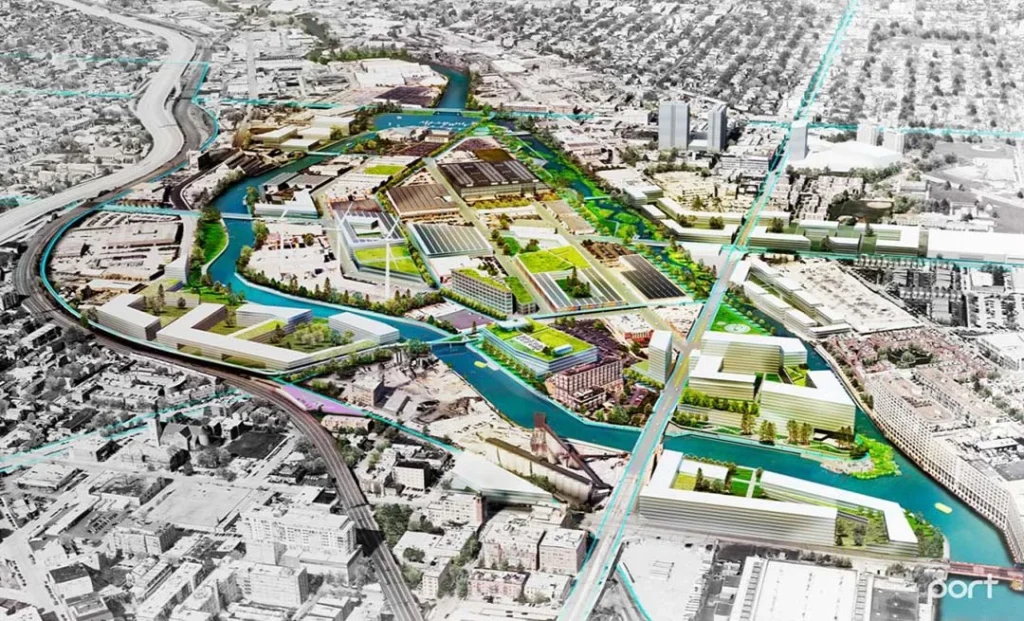
Supporting Literature Study
Implications of Traditional Climate Adjustment
Conventional climate adaptation strategies have largely focused on technological, hazard-specific interventions such as sea walls, levees, and concrete channels (IPCC, 2022). While beneficial in certain contexts, these “grey infrastructure” approaches contain inherent risks. A key example is the “levee effect,” where a false sense of security behind flood defenses can encourage further development in vulnerable areas, leading to greater damage when those structures fail or are overwhelmed.
Main Ecological Theories for Planning
- Resilience Theory and Panarchy:
C.S. Holling distinguished between engineering resilience (bouncing back to a previous state) and ecological resilience (surviving by changing). Panarchy extends this by describing systems as interconnected across time and scale. Slow, larger systems provide stability; fast, smaller ones drive innovation (Gunderson & Holling, 2002).
- Landscape Ecology:
Pioneered by Richard Forman, landscape ecology introduces spatial components like Patches (habitats), Corridors (connections), and the Matrix (dominant land use). Together, these elements support ecosystems, biodiversity, and climate resilience when incorporated into planning.
- Social-Ecological Systems (SES):
Elinor Ostrom emphasized the need to view human and ecological systems as interlinked. True resilience involves not just structures but institutions, knowledge, and adaptive social systems.
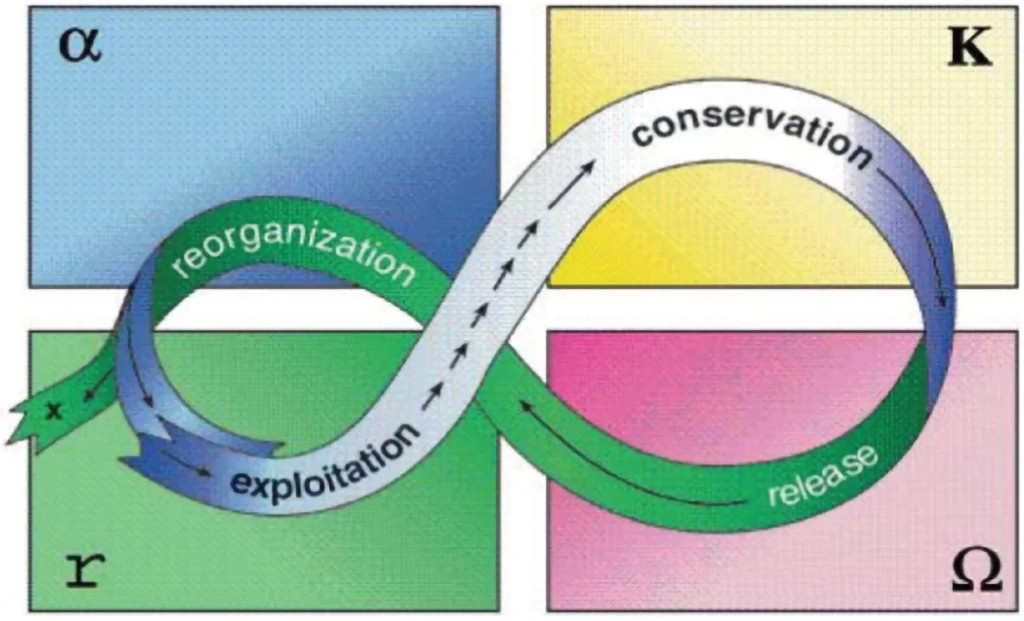
Source: Website Link
Proposed Framework: The Ecological Resilience Planning (ERP) Model
This framework interprets the above theories into an organized, working model for regional planners.
Phase 1: Regional System Mapping (The SES Approach)
- The first step is reimagining the planning unit. This step maps the area as a whole Social-Ecological System.
- Set Functional Boundaries: Overlap the region’s major biophysical systems with major human systems.
- Identify Key Elements and Vulnerabilities: Superimposing region’s significant ecological assets, social vulnerabilities, most significant governance actors, and their sensitivity to specific climate hazards.
Phase 2: Resilience Design (The Landscape Ecology Approach)
- This phase involves the design of a regional green-blue infrastructure network following the principles of landscape ecology.
- Identify and Preserve Core Patches.
- Design Multi-Functional Corridors: Design and create linked corridors connecting these patches.
- Increase the Permeability of the Matrix: Pursue policies in the dominant urban and agricultural context to make it resilient.
Phase 3: Enabling Adaptive Capacity (The Panarchy & Adaptive Management Strategy)
- Resilience is not a permanent condition but a continuous process of adaptation and learning.
- Create Multi-Scalar Governance: Create shared-governance platforms that mirror the nested scales of the system to regional climate consortiums that coordinates action across municipalities.
- Embrace Adaptive Management: Use planning policies as experiments. Set clear objectives, apply interventions, and monitoring their socio-ecological impact closely.

Illustrative Applications of the Ecological Resilience Planning (ERP) Model
Application 1: Regional Flood Risk Management (e.g., Chennai Metropolitan Region)
- A traditional solution would be to construct bigger coastal walls and dredge rivers. The ERP approach would first graph the whole watershed as an SES, plotting marshlands, temple tanks, and floodplains as key “patches.” It would then concentrate on rehabilitating these patches, linking them through safeguarded riverine “corridors” (‘room for the river’), and imposing permeable surface controls in the urban “matrix.” Management would include a regional watershed board in collaboration with local citizen groups that control temple tanks.
Application 2: Reducing Urban Heat Stress (e.g., Delhi National Capital Region)
- Rather than simply marketing air conditioning, the ERP model would identify heat islands and sources of cool air (such as the Yamuna floodplains and the Ridge forest) and depict them as patches. The plan would be to establish a network of ventilated green “corridors” between these patches, with encouragement of green building codes and urban forestry throughout the urban “matrix.” An NCR-level climate agency would drive policy, with neighborhood-level greening efforts handled by Resident Welfare Associations (RWAs).
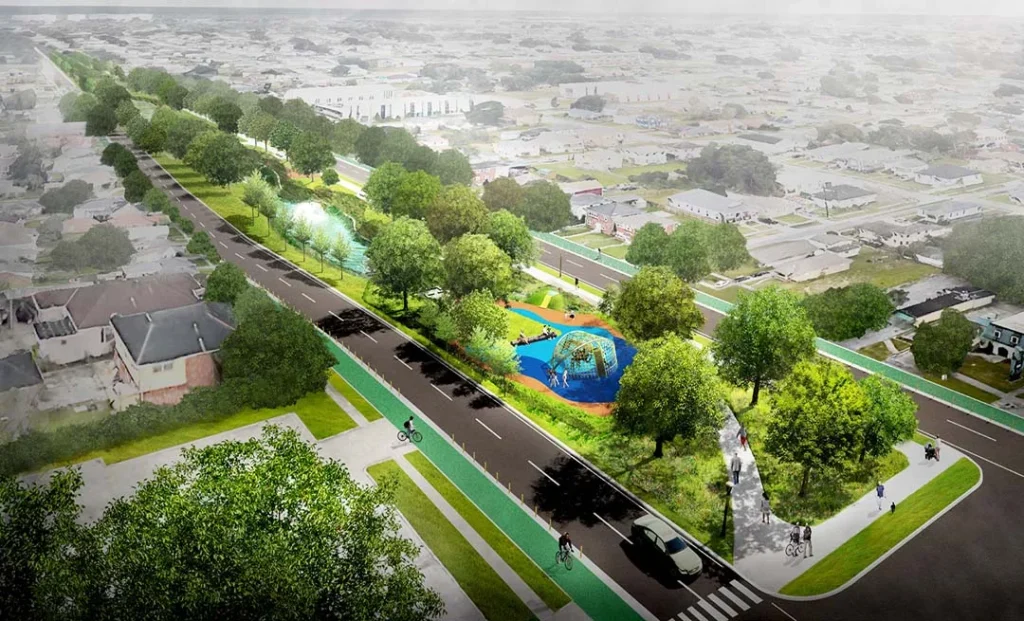
Further Discussions
The key advantage of the ERP model is that it revolutionizes the planning objective: from developing systems to be “fail-safe” to developing systems to be “safe-to-fail.” It embraces the reality that disturbances will occur and concentrates on developing the innate capability of the area to withstand and thrive in spite of them. This type of approach creates a myriad of co-benefits, including increased biodiversity, better public health, and more social cohesion.
Yet the application of such a framework is confronted with daunting challenges:
- Institutional Fragmentation: The ERP model demands a kind of inter-agency and cross-jurisdictional cooperation that is not typical of the siloed urban governance world.
- Political Cycles: The iterative, long-term, adaptive management approach conflicts with short-term political cycles that prefer quick, highly visible, and sometimes simplistic engineering fixes.
- Capacity and Knowledge: Planners and engineers must be retrained in systems thinking and ecological principles. Improved socio-ecological data and monitoring capacity are also necessary.
Breaking these barriers involves a conscious effort to construct institutional capacity, promote political championship of resilience, and integrate ecological literacy into planning education and practice.
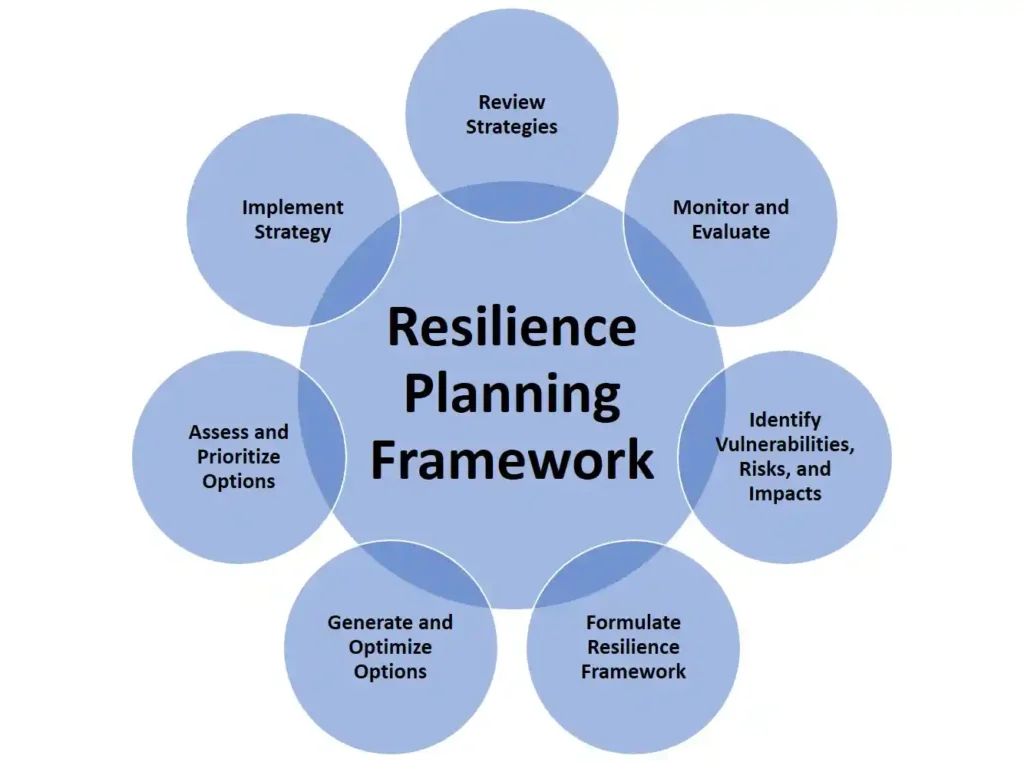
As global warming accelerates, business as usual is no longer a clever proposition. The unprecedented magnitude and unknown qualities of this phenomenon call for a strategic response of equal complexity and uncertainty. Ecological theory offers a solid and empirically based foundation for a new way of planning that treats regions as living systems and accommodates their inner dynamics instead of fighting them. The Ecological Resilience Planning (ERP) model gives a formal basis for the operationalization of these ideas. Through social-ecological mapping, the application of landscape ecology principles to design, and adaptive management as a model of governance, we can begin to create metropolitan regions that will be not only protected from future disasters, but that will be destined to prosper within them.
References
- Forman, R. T. T. (1995). Land Mosaics: The Ecology of Landscapes and Regions. Cambridge University Press.
- Gunderson, L. H., & Holling, C. S. (Eds.). (2002).10 Panarchy: Understanding Transformations in Human and Natural Systems. Island Press.
- Holling, C. S. (1973). Resilience and Stability of Ecological Systems. Annual Review of Ecology and Systematics, 4, 1-23.
- Intergovernmental Panel on Climate Change (IPCC). (2022). Climate Change 2022: Impacts, Adaptation and Vulnerability. Contribution of Working Group II to the Sixth Assessment Report.
- Ostrom, E. (2009). A General Framework for Analyzing Sustainability of Social-Ecological Systems. Science, 325(5939), 419-422.
- Walker, B., & Salt, D. (2006). Resilience Thinking: Sustaining Ecosystems and People in a Changing World. Island Press.

Sauhard Kukreti
About the author
Sauhard Kukreti is an architect currently advancing their expertise through a Master’s degree in Planning, specializing in Regional Planning. Their academic and professional interests are deeply rooted in regional planning and development policies, with a focus on sustainable and efficient regional transportation and rural development. They are also keenly interested in the natural environment and its conservation, addressing climate change impacts and mitigation strategies. Furthermore, Sauhard Kukreti explores the integration of artificial intelligence and machine learning to innovate within the field of regional planning.
Related articles
UDL Illustrator
Masterclass
Visualising Urban and Architecture Diagrams
Session Dates
17th-18th January 2026

Urban Design Lab
Be the part of our Network
Stay updated on workshops, design tools, and calls for collaboration
Curating the best graduate thesis project globally!

Free E-Book
From thesis to Portfolio
A Guide to Convert Academic Work into a Professional Portfolio”
Recent Posts
- Article Posted:
- Article Posted:
- Article Posted:
- Article Posted:
- Article Posted:
- Article Posted:
- Article Posted:
- Article Posted:
- Article Posted:
- Article Posted:
- Article Posted:
Sign up for our Newsletter
“Let’s explore the new avenues of Urban environment together “

